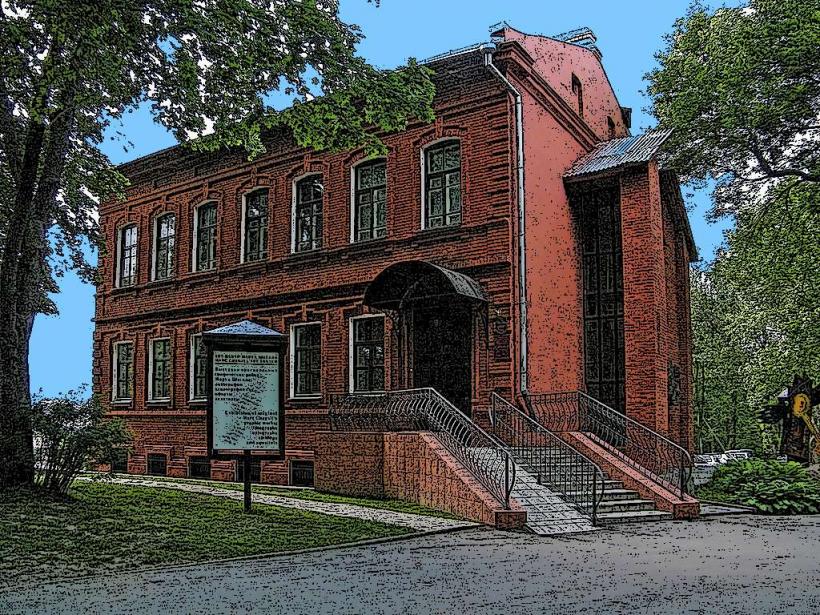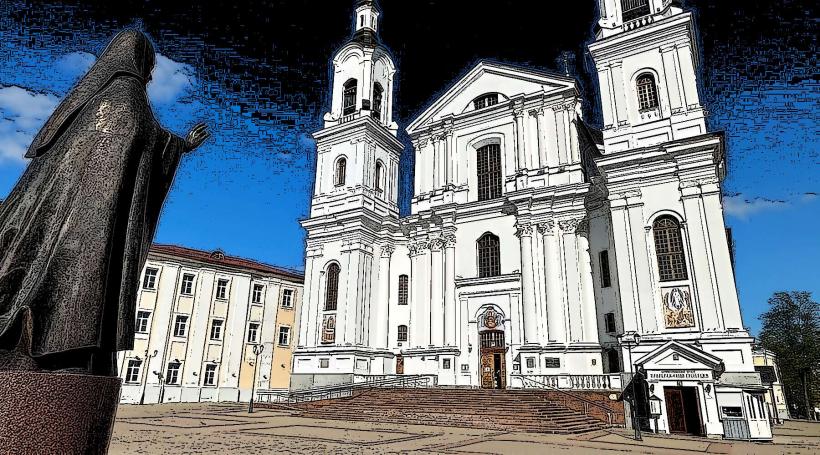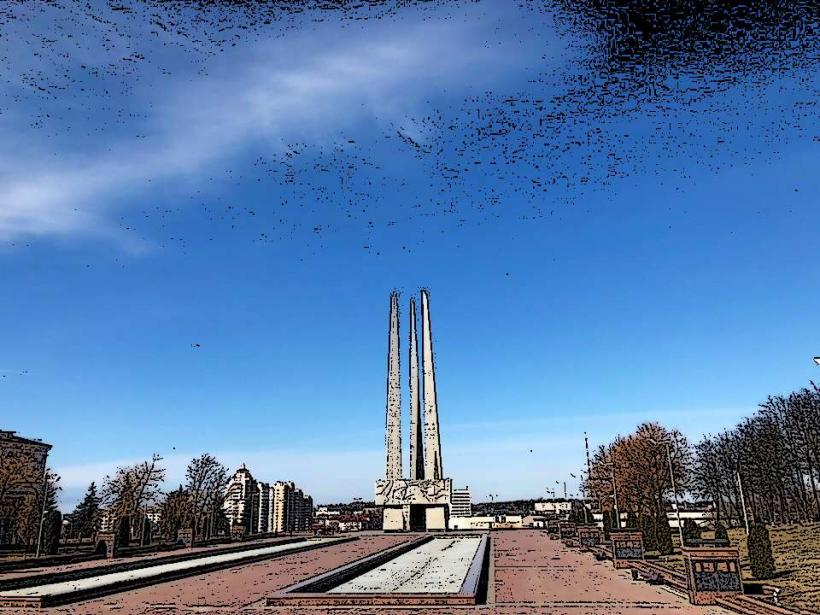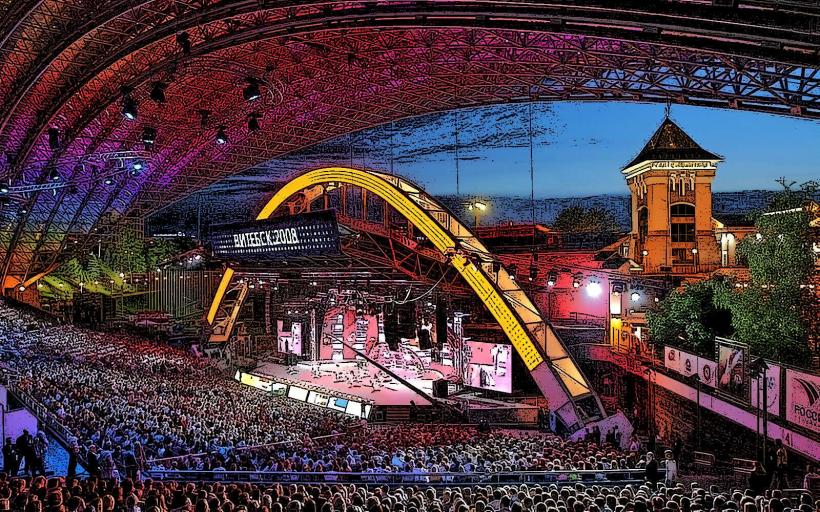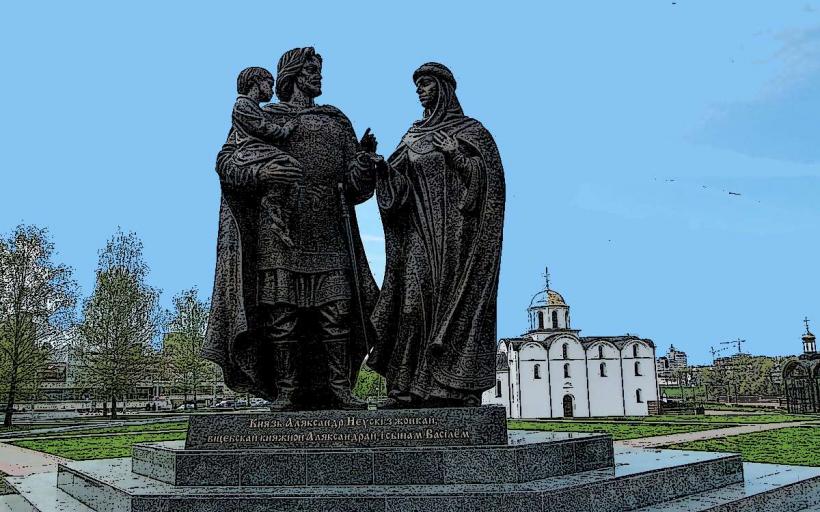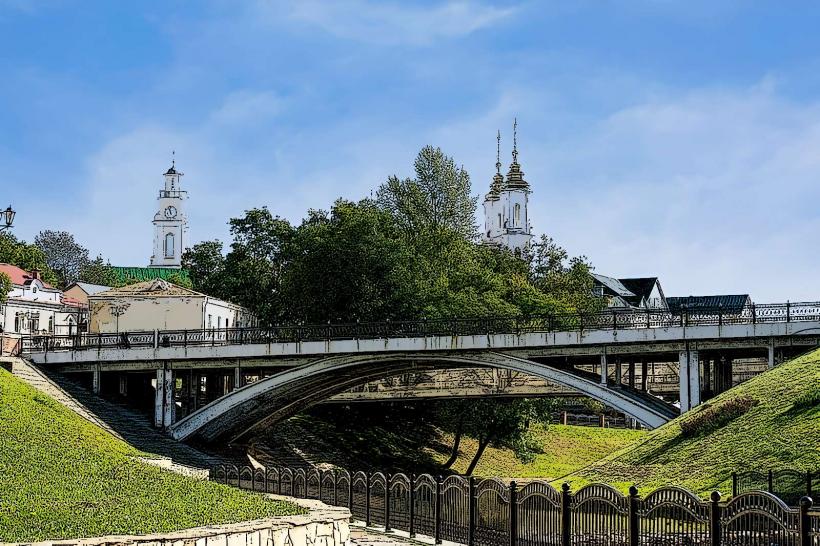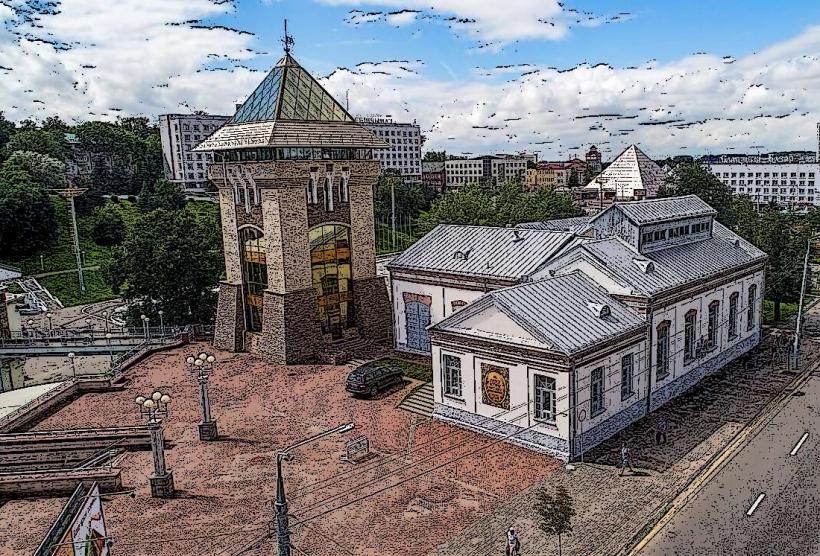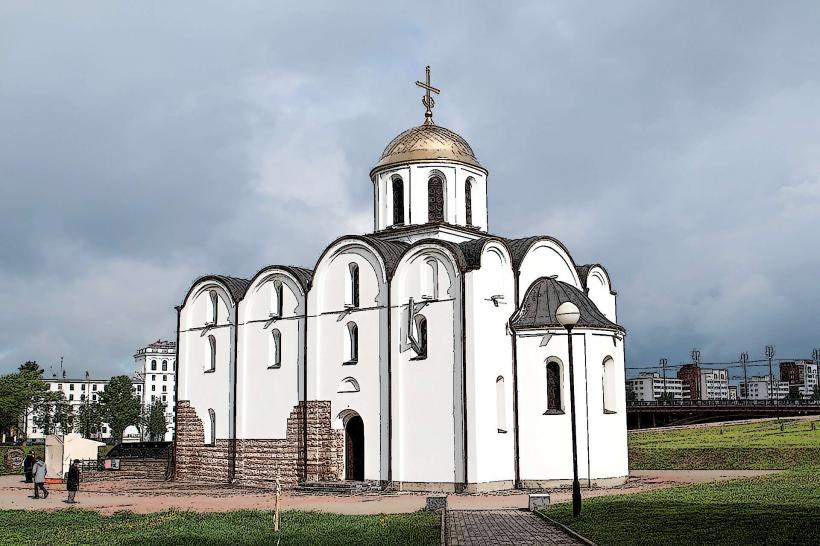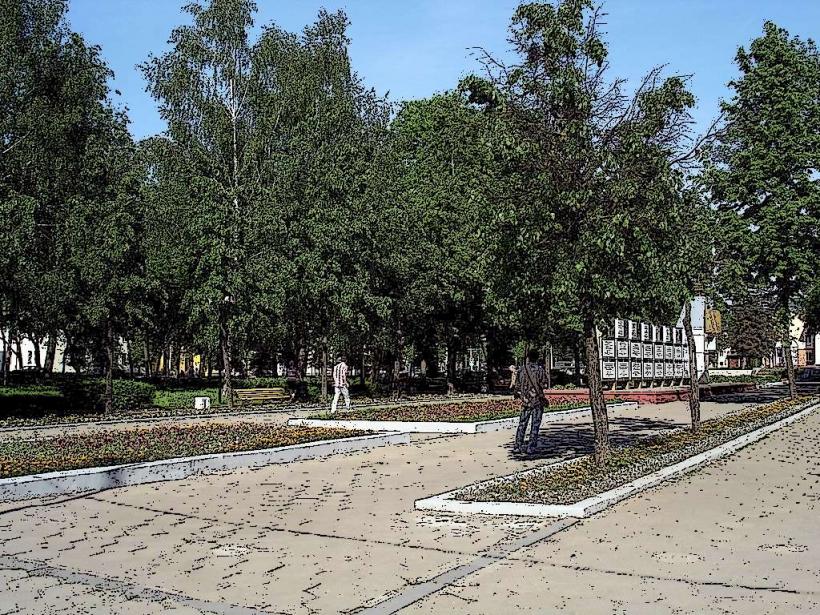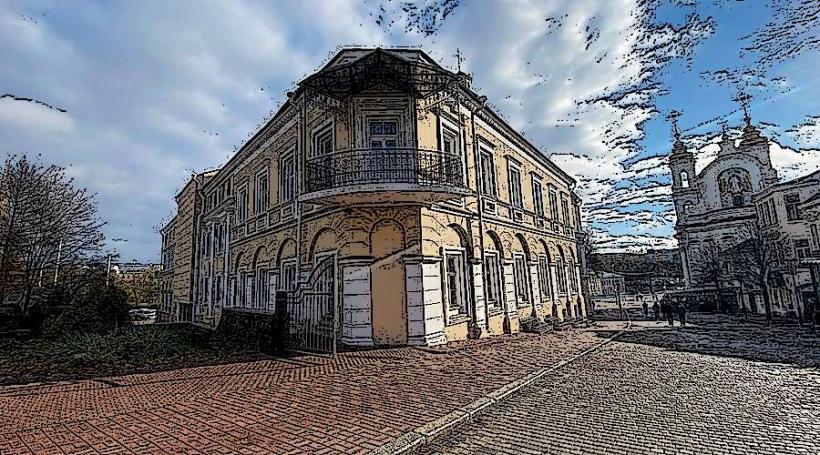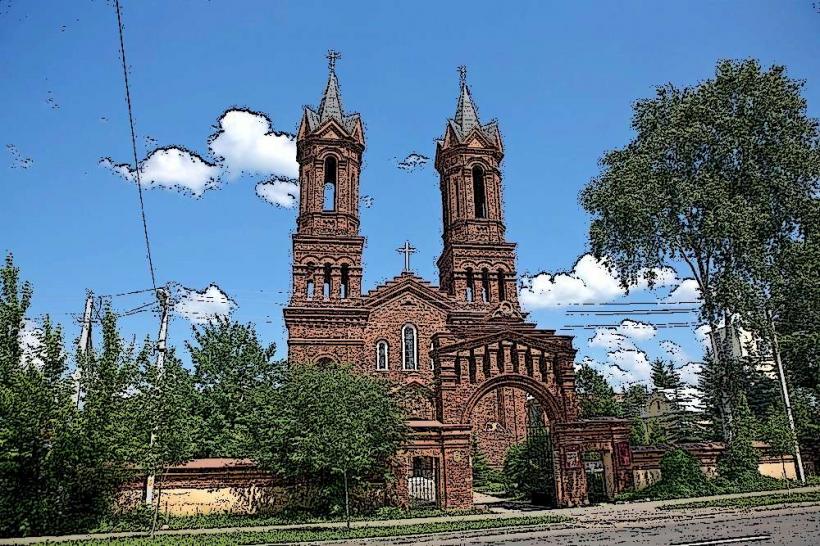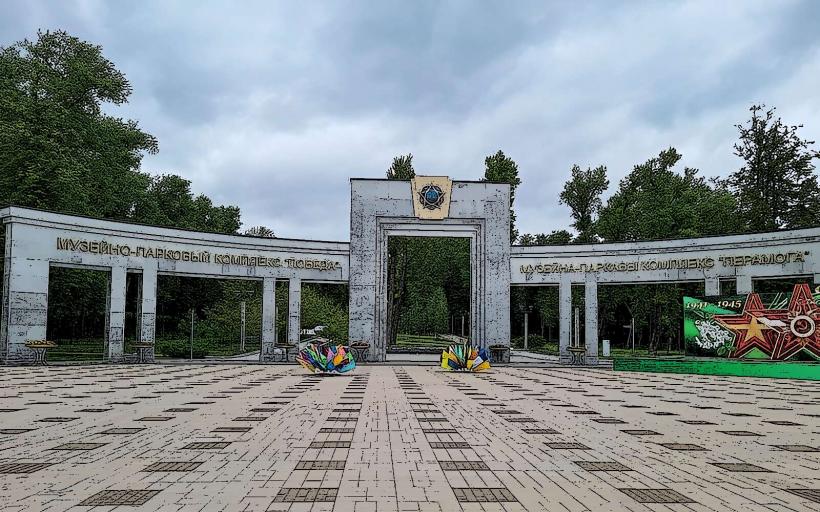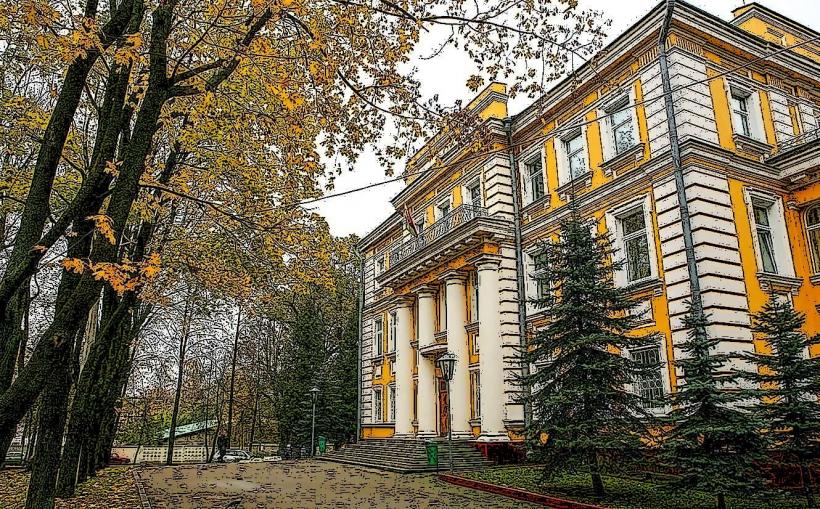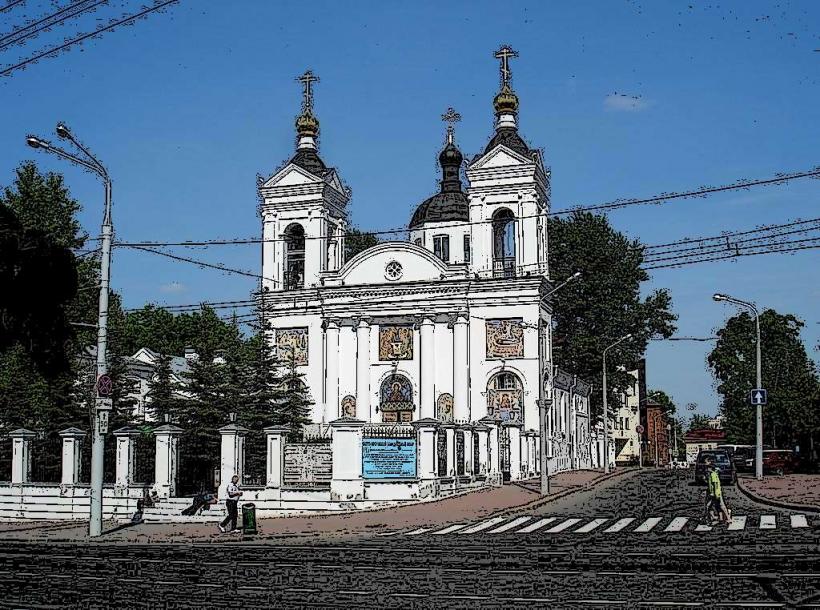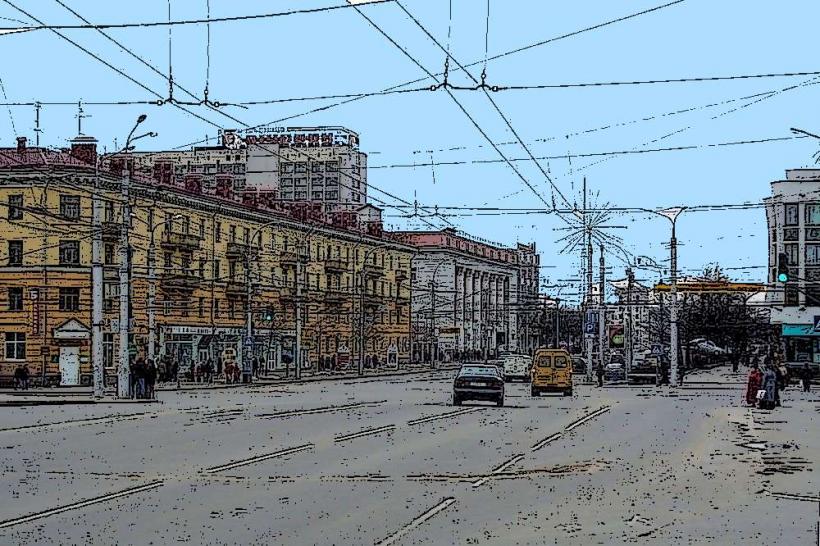Information
Landmark: Vitebsk Town HallCity: Vitebsk
Country: Belarus
Continent: Europe
Vitebsk Town Hall, located in Vitebsk, Belarus, is a significant historical and architectural landmark in the city. Here's a detailed overview:
Historical Background
The Vitebsk Town Hall was originally built in the 16th century, with the first building dating back to 1580. Over the centuries, the building has undergone multiple reconstructions and alterations, reflecting various architectural styles and the changing historical contexts of the region. It is an iconic symbol of the city, with a rich history tied to the development of Vitebsk as a major cultural and administrative center.
In its original form, the Town Hall was a two-story structure, serving as a place of municipal governance. It was an important location during the time of the Grand Duchy of Lithuania and the Polish-Lithuanian Commonwealth. During the 19th century, the building was modified under the Russian Empire's influence, and in the 20th century, especially after World War II, further reconstructions and restorations took place to maintain its historical value.
Architectural Features
The current building is a mix of styles, with a predominant Renaissance and Baroque influence, reflective of the period of its reconstruction in the 17th century. Key features of the Town Hall include:
- Facade: The Town Hall has a classic rectangular facade, characterized by a grand central entrance with large windows above. The front is adorned with decorative elements such as pilasters, arches, and cornices.
- Clock Tower: A distinctive feature of the Town Hall is its clock tower, which rises above the central part of the building. The tower is one of the key elements of Vitebsk’s skyline and serves as a prominent city landmark.
- Interior: While the interior has been modernized over the years, it still retains elements of its historical charm, particularly in the grand hall and other public spaces. The building originally housed offices and rooms for the local administration.
- Restoration: Throughout the 20th and 21st centuries, the Town Hall has undergone restoration efforts to preserve its historical and cultural significance. This includes the reconstruction of its clock tower, which had suffered damage in earlier years.
Cultural Significance
The Vitebsk Town Hall has been a central point for cultural and social activities in the city. Over the centuries, it has hosted important civic events, political gatherings, and public ceremonies. In the modern day, it remains a place of municipal administration, while also serving as a tourist attraction and a venue for various cultural events.
Additionally, the Town Hall is closely linked to the cultural history of Vitebsk, particularly as the birthplace of the famous painter Marc Chagall, who was born in Vitebsk in 1887. Chagall's connection to the city adds an artistic dimension to the historical importance of the Town Hall, as Vitebsk played a role in his early life and work.
Location
Vitebsk Town Hall is situated in the city center, at Sovetskaya Square, and is surrounded by other historical buildings and landmarks, including churches, museums, and cultural centers. Its central location makes it a key focal point for visitors exploring the rich history and culture of Vitebsk.
Visiting Today
Today, the Vitebsk Town Hall is a must-visit landmark for anyone interested in the history and architecture of Belarus. It is a symbol of the city’s rich heritage and serves as a testament to its evolving identity over the centuries. Visitors can admire the architectural beauty of the building, learn about its fascinating history, and enjoy views of the surrounding area from the clock tower.
The Town Hall is also involved in various events throughout the year, including cultural festivals, exhibitions, and celebrations, making it a vibrant part of the city’s cultural life.

